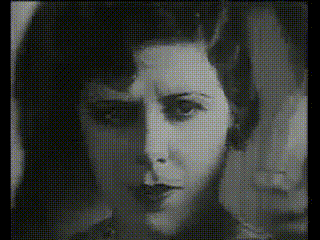Preface
In the early 1970s, when Surrealism and the Cinema was written, most of the writing on surrealism and film was in French. There was only one generally available book in English devoted to this topic, written by an academic; and it stuck mostly to familiar territory.
At the time I was seeing surrealist influences in films most people were not. As a film buff and art student studying film at university, I had the very good luck to study under Jay Leyda (former protégé of pioneering filmmaker Sergei Eisenstein as well as an international authority on a diverse range of subjects in film and the arts). I wrote a lengthy essay on surrealism and film which also sought to expand the experience of film viewing through an awareness of filmic style. Leyda, who encouraged experimental ideas, thought it could make a good book.
I presented my essay to Peter Cowie, then editor at film book publisher The Tantivy Press (London), who arranged a contract with A.S. Barnes (U.S.A.), and I developed the original into Surrealism and the Cinema: Open-eyed Screening. Published in 1976, it was written as an antidote to academic film criticism and aimed at film buffs and art students. The language of semiotics was then being adopted by writers on film; I specifically chose not to use it even though I was dealing in signs and symbols. I advocated an emotion-based approach, not an academic one.
The reception of Surrealism and the Cinema was mixed. Some critics may have been resistant to the idea of a writer who appeared to be an itinerant hippie (the dust jacket photo showed a long-haired individual, with beads, described as being … “somewhere in Morocco”), as well as a book of criticism that was unashamedly anti-criticism. Some critics, in both the popular press and academia, gave the book good reviews. George Melly, English jazz musician, pop culture critic and authority on surrealism, called it, “… very thought provoking and non-pompous.”
As the dog-eared, often annotated, copies I still find in public and university libraries reveal, my book has been, and continues to be, well read and appreciated by readers. It may be that my use of frame enlargements (unusual for the time) and comparisons of films to paintings and comic books (a cutting edge idea then) filled a gap left by the more conventional film books of the period. In this revised and completely re-written edition I have also dealt with issues of syntax and voice so that Surrealism and the Cinema now communicates its ideas more clearly than the original version while retaining its iconoclasm and sense of humour.
In the mid-1970s few outside the art world related surrealism to anything other than the art of Salvador Dalí. Today, most film students and many other general film fans can see the surrealist in Hitchcock; and it is not uncommon to find an event in our daily newspapers described as “surreal” – although every reader may not have a complete understanding of what the term means. Happily, interest in surrealism has grown hugely in the English-speaking world since I wrote this early work; and many books by others have followed.
I have made no attempt in this revised edition to cover the territory between 1976 and today (except for the updated Bibliography) and no attempt to address issues raised by others since then. Surrealism and the Cinema was not, and is not, intended as a definitive survey of surrealist films or filmmakers. For instance, the first edition made no mention of Federico Fellini (a surrealist filmmaker in anyone’s book and a personal favourite); and Jean Cocteau, another filmmaker of surrealist sensibility, is mentioned only in passing. My choice of films, directors and references has always been based on what fires my imagination as well as on the desire to be provocative. I may favour the obscure over the obvious as I like to ‘ferret out’ surrealism where one does not expect to find it.
This has not changed. My intention now, as it was in the early 1970s, is to show how “… perception filters art through film to create the experience of surrealism …” and my book explores not only what surrealism is and what it means, but also how it feels. This is done by defining the main concerns of surrealism and by identifying the devices of surrealism. The devices are what enable us to respond to surrealism. The films I reference in detail are: by one of the originals of the Surrealist Movement (Luis Buñuel), by a director influenced by the movement (Alfred Hitchcock), as well as some less intentionally surreal films by both Hollywood and experimental filmmakers.
Given the general awareness of surrealism today and the increasingly large number of films (and other visual media) made under its influence, you will find the ideas and devices described in Surrealism and the Cinema applicable to many more films than can be dealt with in one volume. My book offers some insight into the nature of surrealism in film, how it makes its impression and what it stirs and evokes in us. I found surrealism where I did and you will have ample opportunity to seek it out for yourself.
Michael Gould
Wellington, New Zealand
July 2011
Surrealism and the Cinema: Open-eyed Screening
A Pioneering Work / Long Out of Print / Now Extensively Revised

READ THE FIRST CHAPTER FOR FREE
DOWNLOAD IT HERE
PURCHASE THE FULL eBOOK
JUST $12.00
BUY IT NOW
Also available on Amazon Kindle and Kobo Books
Bonus Material
Buy full e-book and download a rare audio interview with director Fritz Lang made by the author in 1972.
Surrealism and the Cinema: Open-eyed Screening is currently only available in digital format. If interested in a print version please email info@feelthesurreal.com